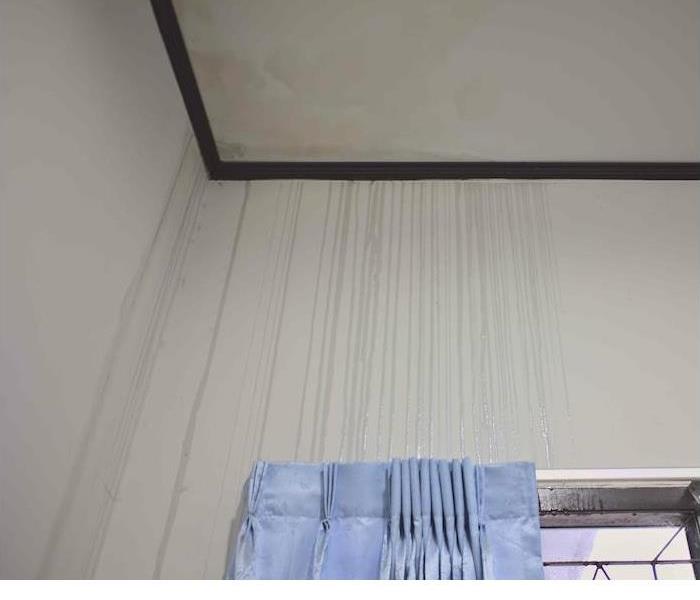Water Where It Shouldn’t Be? Check These Common Culprits | SERVPRO® of Reno Southwest
9/7/2021 (Permalink)
 A water leak can turn into a big problem. Contact the SERVPRO of Reno Southwest team if you are dealing with any water damage.
A water leak can turn into a big problem. Contact the SERVPRO of Reno Southwest team if you are dealing with any water damage.
Dealing with water damage can be a stressful situation. Water in your home makes life easier, except when it goes outside of the areas in which it is designed to be contained. Water is always looking for somewhere to go, and it always seeks the path of least resistance.
Having knowledge of home systems that are designed to contain water can help you determine where a leak is coming from. Let’s look at a few common sources of water damage to keep your eye on:
Toilet seal. The toilet has two seals. One is a flapper that contains water in the tank, and the other is a wax seal that is located at the bottom of the commode where it meets the drain. Both of these seals have the ability to fail over time.
Refrigerator. Refrigerators with automated ice makers will have a supply line, which is a small plastic tube that takes water from the supply line and feeds the ice maker. All of those connections have the ability to leak. Refrigerators also have an evaporator coil that is used to help defrosting ice dissipate. If the coil doesn’t evaporate all of the water, there is a drip pan to catch it. From there, most of the time it evaporates. In certain instances, the drip pan may fill and need to be emptied. If that happens, have a professional check the condensing coil to ensure it is in proper working order.
Clogged gutters. It’s considered a good practice to routinely clean the gutters on your home. Debris can fill the gutters and prevent water from going into the downspouts and away from the house.
Roof damage. Storm damage to roofs can come in many different varieties. Tree limbs can break off trees and penetrate the roof, shingles can be torn or removed by high winds and hail damage can damage shingles. These are all things that can damage your roof. It’s best to inspect your roof after each storm to ensure it hasn’t been compromised.
Field line obstruction. There could be many causes for this, but the primary issue is root intrusion. Grease and other obstructions usually happen in the septic tank, unless you connect directly into a sewer system. In that instance, grease can also clog a sewer line.
Sump pump drain. If you have a sump pump, a device to move water from a low point in your basement or crawlspace out into a drain system, make sure the pump is in good working order and free of obstructions.
All of the items mentioned above are opportunities for water to intrude where it’s not meant to go. Knowledge of these systems will help you mitigate the risk. It’s better to be prepared than to have to deal with a water disaster!
If a water leak erupts into a big problem at home, you’ve got the best team in the business on your side. Contact SERVPRO today so we can get started.





 24/7 Emergency Service
24/7 Emergency Service